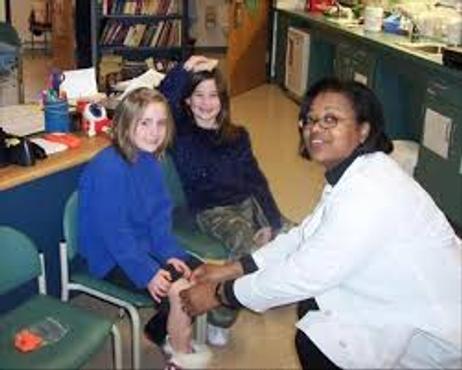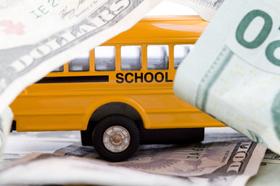School nurses have long given peace of mind to parents, who entrusted nurses with their children's medical issues during school hours. School nurses have carried out a wide range of responsibilities in schools, ranging from treating a sore throat and administering medication to handling medical emergencies. Unfortunately, budget cuts at school districts across the country have left many students without the medical help they need if an emergency arises. Full-time school nurses have become as out of fashion as chalkboards and electric typewriters, and it doesn't appear they will be returning to the world of education any time soon, according to recent reports.
Read the National Association of School Nurses' A Case for School Nurses for a detailed fact-based rationale as to why school nurses are necessary. Additionally, the NASN makes the point that "A student’s health is directly related to his or her ability to learn. Children with unmet health needs have a difficult time engaging in the educational process. The school nurse supports student success by providing health care through assessment, intervention, and follow-up for all children within the school setting. The school nurse addresses the physical, mental, emotional, and social health needs of students and supports their achievement in the learning process."
What School Nurses Do
According to the Center for Nursing Advocacy, there are many tasks that school nurses perform every day, including:
- Providing health care to students and school staff
- Overseeing health management and the provision of services
- Providing screening for common health conditions
- Offering physician referrals to those with medical conditions
- Promoting good health and a healthy school environment
- Serving as a liaison between school staff, students, parents, and medical providers
In addition, most school nurses offer emergency assistance in the event of an accident, injury, or illness. They also administer medications at school for students who require them. Today, more than 3.5 million schoolchildren take medication at school, according to a report at USA Today.
Despite the important role school nurses play in public education, there are fewer and fewer nurses found on campus. Recommended guidelines from the National Association for School Nurses dictate that there should be one school nurse available for every 750 well students. If the school district has a student population that requires additional medical care, that ratio changes to one nurse for every 225 students.
In a country where childhood obesity is rampant today, complex health conditions like diabetes, high blood pressure, and elevated cholesterol levels are becoming more prevalent. However, the ratio for school nurses in some school districts less than half what it should be, and 25% of school districts are without any school nurse. In these areas, school secretaries and other administrators are asked to handle the tasks a nurse would typically take on, often with only a few hours of first aid training under their belt.
This video explains what school nurses do.
No Substitute for Experience
In Georgia, the shortage of nurses in schools makes for a dire situation, according to a recent report on Market Watch. The state boasts one school nurse for every 2, 317 students, with medical duties delegated to less experienced health professionals or school administrators.
Jeannie Edwards, a Dawson County, GA-based school nurse oversees school nurses at eight Dawson County schools and is the director of the Georgia Association of School Nurses. Edwards says registered nurses offer two to four years of training and take continuing education classes to maintain their licensure. There is simply no substitute for that kind of experience when a child is facing a medical emergency.
This webinar explains school nursing in detail.
Loose Guidelines Mean Inconsistencies
The USA Today report explains that inconsistent guidelines for school nurses across the country mean that some states have highly qualified medical professionals on staff – while others don't. In addition to the variations, many schools don't pay a school nurse enough to keep qualified individuals on staff, even when they do spring for the position. The report states that school nurses make about $20,000 less than their peers who work in hospitals and clinics.
Then, there is the problem of funding. A report on Caller.com shows that even in areas like Corpus Christi, Texas, where childhood obesity is at a national high, schools simply don't have the money to bring school nurses on staff full-time. Despite the fact that this medical professional might be the only one that uninsured, low-income students might see, there is simply not enough bulk in the budget to put them into schools.
Scott Johnson, district administrator for the Siren, Wisconsin school district understands the dilemma in Corpus Christi. His school district is also too financially strapped to bring on a sufficient number of school nurses. Johnson told USA Today, "I don't like going without a school nurse. But I don't like cutting a teacher either."
This video explains why school nurses are necessary in every school.
What Parents Can Do
For parents concerned about children with medical issues, Amy Garcia, executive director for the National Association of School Nurses, offered some advice to Market Watch.
First, find out who is providing medical care at your child's school. If a school nurse is on staff, make sure your child knows him or her. If your neighborhood school lacks the staffing necessary to treat your child's condition, consider transferring to a nearby school that can. You never know when the school nurse will make a difference in your child's health and quality of educational experience.
Questions? Contact us on Facebook. @publicschoolreview















